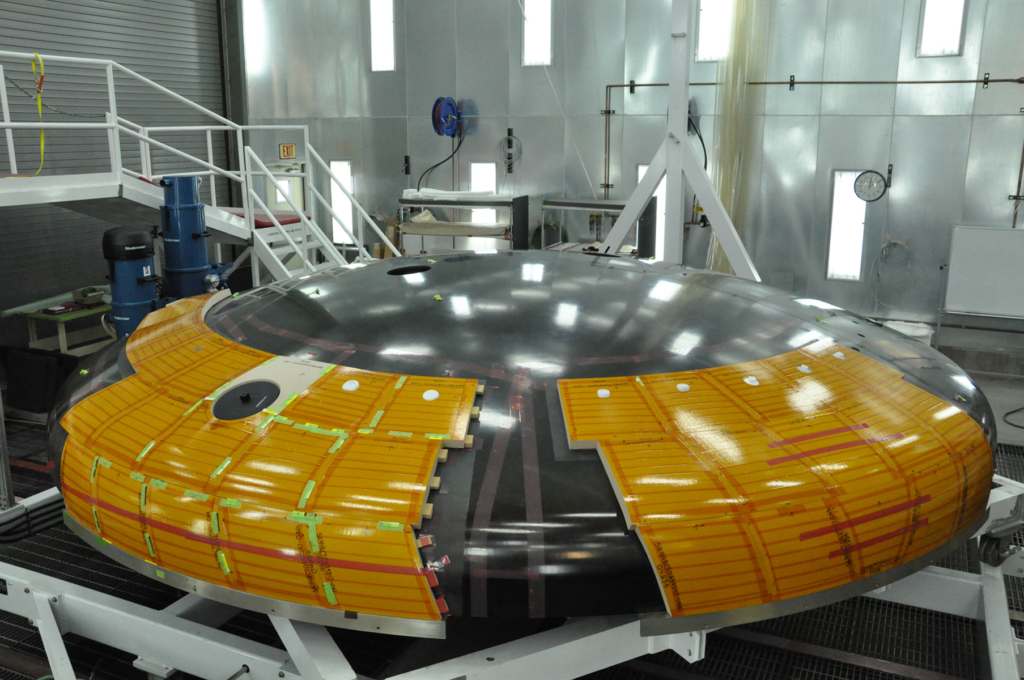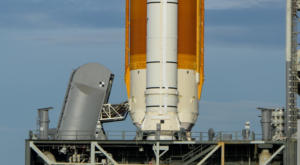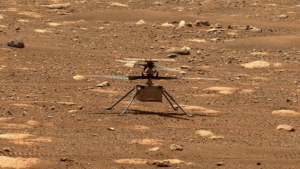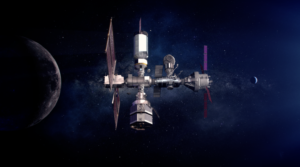
Why NASA’s Orion Spacecraft Is Delaying Artemis II
It’s now been over a year since the Orion spacecraft splashed down concluding the Artemis 1 mission. While initial results were promising, soon after it was discovered that the spacecraft’s heat shield had eroded more than expected. By now in early 2024, the agency is still working on this issue to determine exactly what happened and whether or not changes are necessary.
Last month the agency announced delays to both Artemis II and III, pushing each mission back at least by a year. This continued investigation into the heat shield is just one project of many that encouraged the agency to push back its launch date. Here I will go more in-depth into the main spacecraft issue, NASA’s current progress, when the agency expects to finish its investigation, and more.
Orion’s Heat Shield

In December 2022, NASA’s Orion spacecraft which had launched atop the SLS rocket weeks prior, attempted to reenter the atmosphere. As an uncrewed spacecraft, the goal was to test all of its operations with reentry being at the top of the list. Fortunately, Orion managed to survive reentry and splashdown in the ocean in one piece. Soon after NASA recovered the spacecraft and began inspecting it.
A few months after the splashdown in a media briefing, the agency said that after looking at Orion spacecraft and ground systems, they had found only minor issues that could be addressed ahead of Artemis 2. Of those issues, the biggest, and somewhat unexpected, was with the heat shield on the Orion crew capsule. Howard Hu, Orion program manager at NASA, said that material on the heat shield had ablated differently than what engineers expected from ground tests and computer models.
“We had more liberation of the charred material during reentry than we had expected,” he said. Although, he also pointed out, “We have a significant amount of margin left over”. At that point in time, it seemed like the problem was minimal and would be a relatively quick fix.
Fast forward a year however, and the agency was still working on the investigation. A few months ago in November, Jim Free, NASA associate administrator for exploration systems development, said that Artemis 2 remained on schedule for launch on the Orion spacecraft’s first crewed mission late next year, but that NASA would not proceed until it was sure it understood the problem and made any changes. At that time they agency was still targeting late this year for Artemis II, which has since been changed to 2025.
Free said the heat shield was “the one thing that we’re still working through” from Artemis 1. Unfortunately, he didn’t say much more about the problem and what to expect. A different agency official went more in-depth saying NASA expected to get a “tentative root cause resolution” on the heat shield erosion late next spring. “We will make sure that all of us are comfortable with where they are with root cause before we start talking about flight rationale.”
She said engineers are looking at some of the factors that could have caused the loss of the Avcoat material during reentry. That included the “skip” reentry trajectory performed by Orion and material properties of Avcoat. Ground testing, she said, has been able to mimic the conditions seen on the heat shield during reentry.
These comments were slightly concerning as it revealed that around 1 year after the splashdown, they still hadn’t discovered the root cause of the unexpected erosion. It’s also important to point out that while this investigation is happening, another Orion spacecraft is in the process of being assembled for Artemis II. This concern here is that if the agency does find a problem that needs to be changed, they will then have to go back and fix the next Orion. In regard to this the official said, “There is continued processing of the vehicle for Artemis 2, but we’re just doing that to try to manage schedule. If we do need to go back, if we do need to undo things up to and including replacing heat shield components, we are entirely open to that.”
The most recent update we got on the heat shield was last month in a statement from NASA. Here they were quoted saying, “NASA’s investigation into unexpected loss of char layer pieces from the spacecraft’s heat shield during Artemis I is expected to conclude this spring. Teams have taken a methodical approach to understand the issue, including extensive sampling of the heat shield, testing, and review of data from sensors and imagery” they said. Hopefully, they get this investigation closed and can move on within the next few months.
Artemis II Hardware

As partially mentioned prior, the next Artemis Orion spacecraft expected to actually launch humans is well underway despite ongoing investigations. Last year in June, teams completed installation of the heat shield for the Artemis II Orion spacecraft inside the high bay of the Neil Armstrong Operations and Checkout Building at NASA’s Kennedy Space Center in Florida.
The 16.5-foot-wide heat shield is one of the most important systems on the Orion spacecraft ensuring a safe return of the astronauts on board. As the spacecraft returns to Earth following its mission around the Moon, it will be traveling at speeds of about 25,000 mph and experience outside temperatures of nearly 5,000 degrees Fahrenheit. Inside the spacecraft, however, astronauts are meant to experience a much more comfortable temperature in the mid-70s thanks to Orion’s thermal protection system.
In addition, not only was the heat shield installed, but by now it’s also joined together with the service module. The agency said in a statement, “After successfully completing hardware installations and testing over the past several months, engineers connected the two major components of Orion that will fly NASA astronauts on a mission around the Moon and bring them home safely.” Now that the crew and service modules are integrated, the team will power up the combined crew and service module for the first time. After power on tests are complete, Orion will begin altitude chamber testing, which will put the spacecraft through conditions as close as possible to the environment it will experience in the vacuum of deep space.
This is good in terms of progress, but also is being done with the investigation into the heat shield not yet closed. Whether or not this will create more problems in the future is unknown.
When it comes to a spacecraft heat shield, especially one with humans inside, its importance is immense. NASA knows this and put an incredible amount of time into testing and preparing Orion prior to its first mission. In the past, the Apollo crew module’s heat shield relied on a material called Avcoat to beat the heat. It’s an ablator, meaning it burns off in a controlled fashion during re-entry, transferring heat away from the spacecraft. A new system of Avcoat tiles just one to three inches thick is used to cover the Orion heat shield’s external surface. This is what will make the difference between 5,000 degrees Fahrenheit on the front and a mere 200 degrees on the back side of the heat shield.
Not only that, but a second ablator material was also used in certain locations on Orion. Invented by Ames, the 3-Dimensional Multifunctional Ablative Thermal Protection System (3DMAT) is made of woven threads of quartz in resin. It’s stronger than Avcoat and was included to strengthen connection points along the spacecraft. In the arc jet facilities at Ames, where incredibly hot, fast-moving gases mimic the conditions of atmospheric entry, the TPS team completed more than 1,000 tests.
In one example, a sample of the Orion spacecraft’s heat shield material undergoes testing in the Laser-Enhanced Arc Jet Facility at NASA’s Ames Research Center in California’s Silicon Valley on April 19, 2021. Orion’s thermal protection materials underwent a lot of tests, during which extremely hot and fast-moving gases passed over the test material, approximating the heating a spacecraft experiences when entering the atmosphere. The test results helped certify the heat shield for the Artemis I mission. So much so that going into Artemis 1, the agency was very confident in this system. While it still performed well and safely landed, the unexpected loss was quite a shock.
With the issue still under investigation, a launch of crew later this year was not going to happen. Now with Artemis II set for late next year, even if an issue is found and they have to take apart the Artemis II Orion, they should still have time for a launch. Ideally, however, nothing comes from it and they determine the heat shield is fine.
Orion as a vehicle, is developed to be capable of sending astronauts to the Moon and is a key part of eventually sending them on to Mars. Orion’s crew module, sometimes referred to as the capsule, sits atop the heat shield. Built by main contractor Lockheed Martin, it can provide living space on missions for four astronauts for up to 21 days without docking to another spacecraft. Advances in technology for deep space travel such as life support, avionics, power systems, and state-of-the-art thermal protection will support the crew during launch, landing, and recovery. In the coming months, we can expect more updates on this hardware and the next mission.
Conclusion
NASA, over a year after the Artemis I splashdown, is still investigating the Orion heat shield which didn’t perform exactly as expected. In this case, the material on the heat shield had ablated differently than what engineers had seen in ground tests and computer models. We will have to wait and see how it progresses and the impact it has on the space industry.



